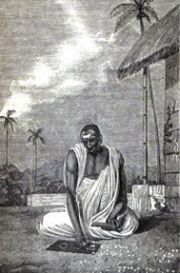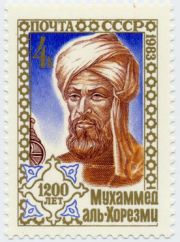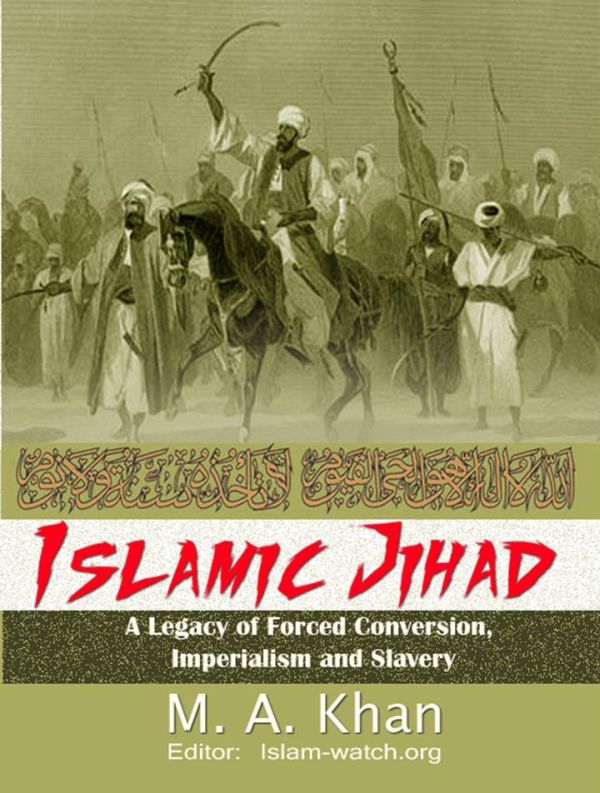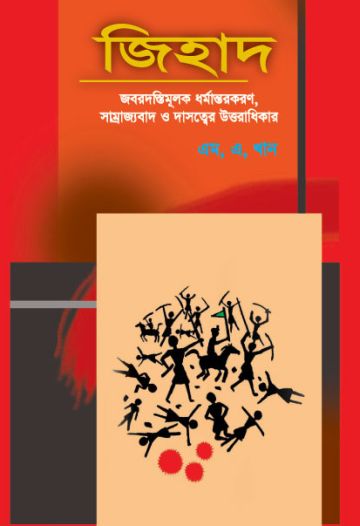It has been mentioned in the first part of this article that Caliph al-Ma’mun (R. 813-33) founded a library called Bayt al-Hikma or House of Wisdom in Baghdad, where Greek, Persian and Hindu scholars used to meet. It had also engaged a group of translators for rendering manuscripts from Sanskrit, Greek and other languages into Arabic. This House of Wisdom had played an important role in the transmission of Hindu numerals to Europe.
Antiquity of Hindu numerals
The style of writing numbers, infinitely large or infinitesimally small, using nine symbols (1-9), zero and decimal point, that we use today, was invented in India. After it reached Europe through Muslims via Spain, the Europeans, due to their ignorance of its true origin, took it to be an Arabic invention and called it the Arabic numerals, although Muslim scholars used to call it Hindu numerals.
In this system, if a digit is multiplied by ten, the digit shifts by one place towards the left and if multiplied by hundred, the digit shifts by two places. Similarly, if a digit is divided by ten, it shifts by one place towards the right of the decimal point and if it is divided by hundred, it shifts by two places towards the right. So, this system is known as a base ten system. In Babylon, a base sixty counting was used and this system is still used in measuring angles and time, where 60 seconds make one minute and 60 minutes make one degree or one hour.
As to the invention of this "base ten" Hindu numerals, many believe that famous Indian mathematician, astronomer and scientist Aryabhatta was the inventor of this Hindu numeral, but this notion seems not true. A decimal system was already in place during the Harappan period, as indicated by an analysis of Harappan weights and measures. “Weights corresponding to ratios of 0.05, 0.1, 0.2, 0.5, 1, 2, 5, 10, 20, 50, 100, 200, and 500 have been identified, as have scales with decimal divisions. A particularly notable characteristic of Harappan weights and measures is their remarkable accuracy.”[i] However, ascertaining the true antiquity of the Hindu numerals is difficult.
Al- Khwarizmi: The man who took Hindu numerals to the West
The Persian-born Abu Abdullah Muhammad ibn Musa al-Khwarizmi or simply Al-Khwarizmi (lived in 9th century AD), a Muslim mathematician, astronomer as well as a geographer was the man who carried the Hindu numerals to Spain and thus to Europe.[ii]
 Brahmagupta |
 A stamp by former USSR post in 1983 to honour al-Khwarizmi |
Al- Khwarizmi received an invitation from the Caliph Al-Ma’mun to work at the House of Wisdom. There he came upon an Indian mathematical treatise, the Brahmasphuta Siddhanta (Sindhind to Arabs) of celebrated Hindu astronomer and mathematician Brahmagupta, that had been brought to Baghdad by Indian scholars in 770 and was translated into Arabic. The Wikipedia says of Brahmagupta: "Brahmagupta (598–668 CE) was an Indian mathematician and astronomer who wrote many important works on mathematics and astronomy. His best known work is the Brāhmasphuṭa Siddhānta (Correctly Established Doctrine of Brahma), written in 628 CE in Bhinmal. Its 25 chapters contain several unprecedented mathematical results.”[iii]
“Brahmagupta was born in 598 CE (it is believed) in Bhinmal city in the state of Rajasthan of Northwest India. In ancient times Bhillamala was the seat of power of the Gurjars. His father was Jisnu Gupta. He likely lived most of his life in Bhillamala (modern Bhinmal in Rajasthan) during the reign (and possibly under the patronage) of King Vyaghramukha. As a result, Brahmagupta is often referred to as Bhillamalacarya, that is, the teacher from Bhillamala. He was the head of the astronomical observatory at Ujjain, and during his tenure there wrote four texts on mathematics and astronomy: the Cadamekela in 624, the Brahmasphutasiddhanta in 628, the Khandakhadyaka in 665, and the Durkeamynarda in 672. The Brahmasphutasiddhanta (Corrected Treatise of Brahma) is arguably his most famous work. The historian al-Biruni (c. 1050) in his book Tariq al-Hind states that the Abbasid caliph al-Ma'mun had an embassy in India and from India a book was brought to Baghdad which was translated into Arabic as Sindhind. It is generally presumed that Sindhind is none other than Brahmagupta's Brahmasphuta-siddhanta.”(ref. iii)
Many believe that Brahmagupta was the first to use zero as a number as he gave rules to compute with zero, but its true origin may go further back.
Al- Khwarizmi and his works
Al- Khwarizmi was fascinated when chanced upon Brahmagupta's Brahmasphuta Siddhanta, which opened a universe before him. For the first time, "he found the Indian method of representing numerical quantities with symbols. Until that times, the Arabs and others in the Mediterranean, Mesopotamian region had been using several methods of representing quantities. One was a verbal method … writing out the numbers as words, the other was a complicated finger counting method, which was perhaps as versatile as the Chinese abacus, but inadequate to the needs of ever more abstract calculation of star positions. Finally, there was the Roman numeral system.”[iv]
With Brahmagupta’s work before him, he could find a system of Indian symbols representing quantities from 0 to 9, which could be used in combinations to represent ever increasing quantities rising to infinity. He was stunned, amazed. He found a system of writing numbers, the decimal system, and could comprehend it as the most efficient way to manage ever more complex calculations. “In the Hindu writing of Brahmagupta, was a single black dot. When Al-Khwarzimi asked his translators for an explanation, they replied that it meant nothing. Thinking they were playing with him, he pressed for an explanation. And they responded by saying the black dot represented quantity of nothing – shunya or zero. Al-Khwarzimi was stunned by its implications. He was baffled and exited by the meaning of zero, its mystery and evasiveness.”(ref. iv)
He decided to work up this system of symbols for mathematical calculations and combining it with Greek works, namely Geometry, he developed Algebra and Algorithm. With time, this Hindu numerals, through Muslim Spain, reached Europe, where it attained the name, Arabic numeral, and became accepted as a universal, efficient and coherent language. But unfortunately it lost its Hindu identity.
Al-Khwarzimi had expressed his indebtedness to the Hindu tradition by naming the Arabic translation of Brahmasphuta Siddhanta as Sindhind (Sind stands for Sanskrit Siddhanta; Hind stands for Hindu or Hindustan). But today’s Muslim scholars are on their heels to deny their indebtedness to the Hindus and claim that these numerals are pure Arabic origin. So writes a Muslim author: “Arab contributions to human civilization are noteworthy. In arithmetic the style of writing digits from right to left is an evidence of its Arab origin. For instance, the numeral for five hundred in English should be written as 005, not as 500 according to English's left-to-right reading style.”[v]
It is for the readers to decide, how greet this author for making such an asinine comment.
[i] http://www.hinduism.co.za/vedic.htm
[ii] http://en.wikipedia.org/wiki/Mu%E1%B8%A5ammad_ibn_M%C5%ABs%C4%81_al-Khw%C4%81rizm%C4%AB
[iii] Wikipedia Encyclopedia
[iv] http://www.youtube.com/watch?v=viR5g6qnv44
[v] http://www.arabicnews.com/ansub/Daily/Day/980422/1998042208.html



Comments powered by CComment